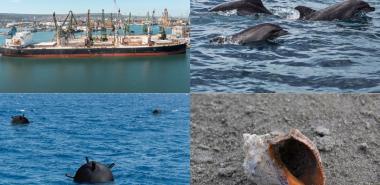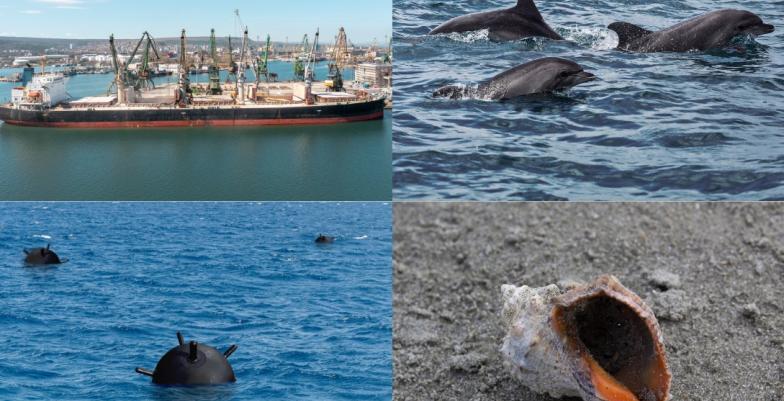Regional policies
Black Sea Synergy
A bottom-up approach to project development
Launched in 2007, the Black Sea Synergy encourages a bottom-up approach to project development, identifying and supporting the needs, priorities and aims of partners in the region, and what they want to do together. The key elements of the Black Sea Synergy include building confidence, fostering regional dialogue and achieving tangible results for states and citizens in the region. A stable, secure, resilient and prosperous Black Sea region is in the direct interest of its citizens and of the EU overall.
Implementation reports of the regional cooperation initiative
Since 2007, the Black Sea Synergy (BSS) has been the EU’s regional policy framework for the Black Sea region. It aims to enhance policy coherence and further cooperation between the countries surrounding the Black Sea, providing a flexible framework for developing practical region-wide solutions.
On 3 July 2024, the EEAS and the European Commission published the fourth implementation report of the Black Sea Synergy. The Joint Staff Working Document Black Sea Synergy: 4th review of a regional cooperation initiative - period 2019-2023.
The report addresses regional and global challenges in the Black Sea region. It presents the Synergy’s successful strands of work and flagship initiatives, alongside key achievements in all areas of cooperation. This offers a solid basis in view of the European Council conclusions of 27 June 2024 inviting the Commission and the High Representative to prepare a Joint Communication on building an EU strategic approach to the Black Sea.
Despite Russia’s ongoing war against Ukraine, activities under the Black Sea Synergy have been successfully implemented in all its fields of cooperation, strengthening the interconnections among them. These fields are:
- integrated maritime policy and sustainable blue economy;
- fisheries and aquaculture;
- environmental protection and climate change;
- cross-border cooperation - Black Sea basin programme 2014-2020, (Interreg VI - B) NEXT Black Sea basin programme;
- civil society engagement, democracy and human rights;
- education, research and innovation (beyond the marine sector), culture and tourism; and
- energy and transport.

The implementation of the Synergy has also resulted in increased engagement by most of the participating countries, except Russia, in its two milestone initiatives on maritime affairs and marine research and innovation: the Common Maritime Agenda for the Black Sea and its scientific pillar, the common Strategic Research and Innovation Agenda for the Black Sea. This shows the potential of the Black Sea Synergy to facilitate cooperation and cohesion for all participating states and beyond.
The ‘EU-Ukraine Solidarity Lanes’ have proven to be a lifeline for Ukraine’s economy, showcasing flexible and proactive cooperation on the part of a number of Black Sea riparian countries.
Since 2019, the Black Sea Synergy has navigated challenges posed by the impact of the COVID-19 pandemic and Russia’s war of aggression against Ukraine. Important policy developments, such as the EU Strategic Compass for Security and Defence, the EU Maritime security strategy and the Global Gateway have supported the implementation of the Synergy. Increased synergies with other policy frameworks have been factored in, such as the Eastern Partnership, its 2020 new agenda on recovery, resilience and reform together with the flagship initiatives under its Economic and Investment Plan.
At the same time, the EU enlargement process has gained momentum and relevance for the Black Sea region with the decision to open accession negotiations with Ukraine and the Republic of Moldova, and to grant Georgia the status of a candidate country, contingent on certain reforms.
The report points that the consequences of Russia’s war of aggression against Ukraine, undermining the rules-based international order and security in the Black Sea, Europe and beyond, have added to the challenges and threats experienced already by the region. The war has resulted in increased economic, commercial, and environmental challenges, with war-related pollution and disrupted navigation due to floating sea mines and naval warfare. Additionally, Russia’s weaponization of food and energy is jeopardizing global food security. It comes in a package with disinformation and information manipulation, malign activities and hybrid warfare. This report confirms the wide range of EU activities in the Black Sea region that have sought to address existing and new challenges in the region. The EU’s approach to the regional cooperation in the Black Sea continues to be grounded in respect for the norms and principles of international law, especially sovereignty, independence and territorial integrity within internationally recognised borders, as well as for the United Nations Convention on the Law of the Sea. Therefore, as part of the EU’s response to Russia’s war of aggression against Ukraine, Russia’s participation in the Black Sea Synergy has been suspended and the same goes for all forms of cooperation with Russian public stakeholders.
Building on the Black Sea Synergy, a more strategic approach to the Black Sea will help unlock the economic, democratic and cooperative potential of the region in a secure and stable environment. Black Sea regional cooperation will be key to deal with transnational challenges such as demining and pollution.
On 5 March 2019, the EEAS and the European Commission published the third implementation report of the Black Sea Synergy. The Joint Staff Working Document 'Black Sea Synergy: review of a regional cooperation initiative – period 2015-2018' underlineding results, drawing lessons learned and flagging key aspects, further informing the developments of this initiative. It confirmed the practical utility of the Black Sea Synergy initiative, its positive contribution to regional cooperation and its yet untapped potential.
The report outlined positive developments in the areas of blue growth, maritime policy, marine research and innovation, fisheries, environmental protection and climate change, cross-border cooperation and civil society engagement. Areas of cooperation such as education, science and innovation (beyond marine), culture and tourism, energy and transport, albeit less developed, receive interest from partners in the region. In particular, the region has potential for interconnectivity both within the EU and between continents, considering the "bridging role of the Black Sea basin" mentioned in the 2018 EU Communication on ‘Connecting Europe and Asia — Building Blocks for an EU Strategy'. Other fields could offer opportunities for future cooperation, such as social affairs, employment, and trade.
The 2019 Joint Staff Working Document reviewed links of the Black Sea Synergy with other EU strategies and policies relevant for the Black Sea region, such as the EU Strategy for Danube Region and the EU Communication on ‘Connecting Europe and Asia — Building Blocks for an EU Strategy'. It also reflects on the cooperation with regional and international organisations active in the Black Sea, particularly with the Organisation of the Black Sea Economic Cooperation (BSEC) and the General Fisheries Commission for the Mediterranean (GFCM).
In 2015, the EEAS and the European Commission published the second implementation report of the Black Sea Synergy. The Joint Staff Working Document 'Black Sea Synergy: review of a regional cooperation initiative', covering the 2009-2014 period, provided a snapshot of the progress achieved in the main areas of cooperation in the Black Sea region. This review referred to strengthening regional cooperation via concrete projects and making the best possible use of the wide range of EU's tools in order to bring added value to the citizens of the region while ensuring environmental sustainability.
The first review on the Black Sea Synergy, the Communication from the Commission to the Council and the European Parliament, entitled ‘Report on the First Year of Implementation of the Black Sea Synergy’ was published in June 2008.





